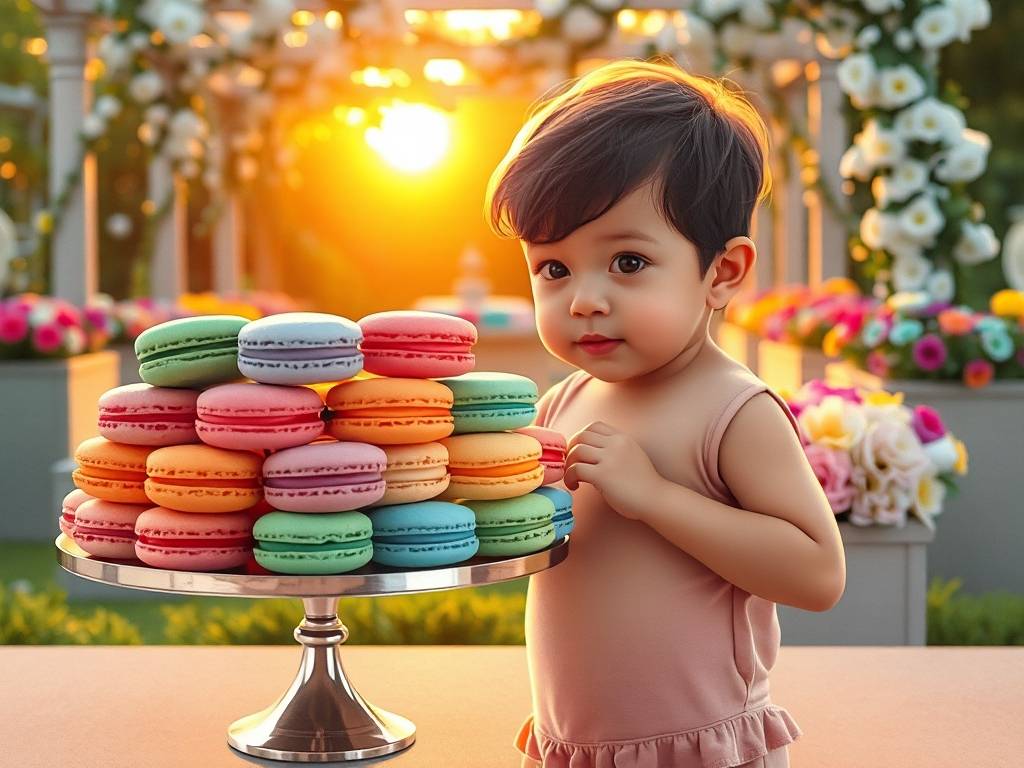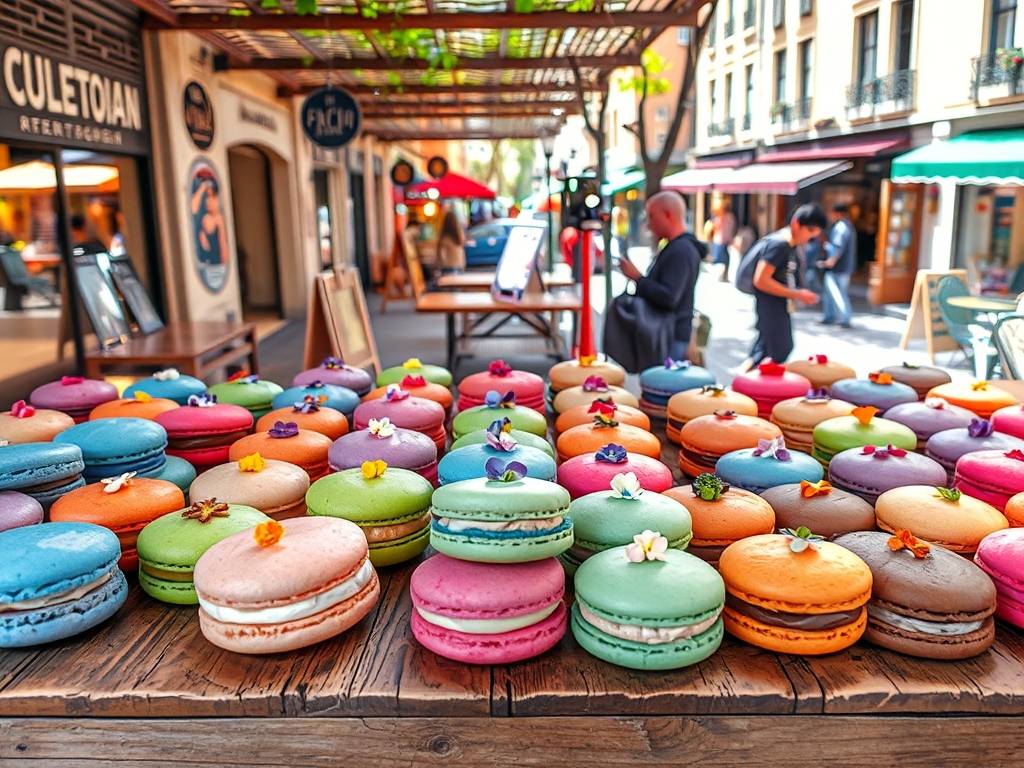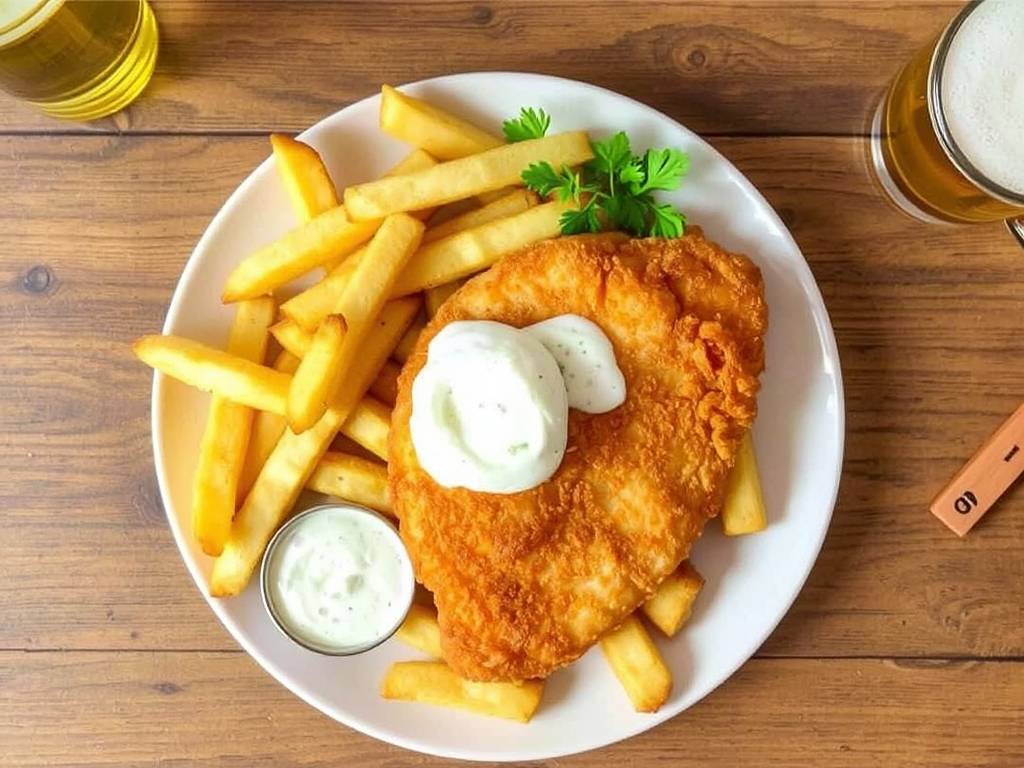The Art and Allure of Macarons: Colorful, Cream-Filled, Crisp
Macarons, the delicate and vibrant French confections, have captured the hearts and palates of dessert enthusiasts worldwide. With their crisp shells, creamy fillings, and kaleidoscope of colors, these petite treats are more than just a sweet indulgence—they are a testament to the artistry and precision of pastry-making. From their historical origins to their modern-day variations, macarons continue to symbolize elegance, creativity, and culinary excellence.

A Brief History of Macarons
The macaron’s journey began not in France, but in Italy. It is believed that Catherine de’ Medici, upon marrying King Henry II of France in the 16th century, brought her Italian pastry chefs to the French court. Among their culinary contributions was a simple almond-based cookie, which eventually evolved into the macaron we know today. However, it wasn’t until the 20th century that the macaron took on its iconic form. In the 1930s, Pierre Desfontaines of the renowned Parisian patisserie Ladurée had the ingenious idea of sandwiching two almond meringue cookies together with a flavorful ganache or buttercream filling. This innovation transformed the macaron from a humble cookie into an elegant dessert, cementing its status as a French culinary icon.
The Anatomy of a Perfect Macaron
A macaron’s appeal lies in its unique texture and structure. Each component—the shell, the filling, and the overall balance—plays a critical role in creating the perfect bite.

The Shell: Crisp and Delicate
The shell is the foundation of the macaron. Made from a mixture of almond flour, powdered sugar, and egg whites, it is characterized by its smooth, domed top and ruffled "foot" at the base. Achieving the ideal shell requires precision and skill. The process begins with whipping egg whites to stiff peaks, followed by gently folding in the dry ingredients—a technique known as macaronage. Overmixing or undermixing can lead to cracked shells, hollow interiors, or a lack of the signature foot. Once piped onto baking sheets, the shells are left to rest until they form a slight skin, which helps them rise evenly in the oven. The result is a crisp exterior that gives way to a slightly chewy interior.
The Filling: Creamy and Flavorful
The filling is where macarons truly shine. It provides not only flavor but also moisture, which softens the shells slightly, creating a harmonious texture. Traditional fillings include ganache, buttercream, and fruit jams. Ganache, made from chocolate and cream, offers a rich and velvety consistency. Buttercream, whipped from butter and sugar, is light and airy, often infused with extracts, fruit purees, or spices. Jam fillings add a fruity tang that contrasts beautifully with the sweetness of the shells. Modern variations have expanded the possibilities, with fillings ranging from salted caramel and matcha to exotic flavors like lavender, rose, and passionfruit.
The Balance: Color, Flavor, and Texture
A well-crafted macaron is a study in balance. The shells must be crisp yet tender, the filling creamy but not overly sweet, and the flavors must complement rather than overpower one another. Color also plays a vital role, often serving as a visual cue for the flavor within. Vibrant hues—pink for raspberry, green for pistachio, yellow for lemon—make macarons as visually appealing as they are delicious.
The Art of Making Macarons
Creating macarons is often described as both a science and an art. The process demands attention to detail, from measuring ingredients with precision to mastering techniques like macaronage and piping. Even environmental factors, such as humidity and temperature, can impact the outcome. For this reason, many home bakers approach macaron-making with a mix of reverence and trepidation.
However, the challenges are part of what makes macarons so special. Successfully baking a batch of perfect macarons is a rewarding experience, a testament to patience and practice. Professional pastry chefs elevate this craft to an art form, experimenting with colors, flavors, and designs to create macarons that are almost too beautiful to eat.
Macarons in Modern Culture
In recent years, macarons have become a global phenomenon. They are a staple in high-end patisseries, a popular gift for special occasions, and a favorite subject for food photographers and social media influencers. Their dainty size and aesthetic appeal make them ideal for celebrations like weddings, baby showers, and afternoon tea parties.
Macarons have also inspired countless variations and innovations. From seasonal flavors like pumpkin spice and peppermint to collaborations with luxury brands and artists, macarons continue to evolve while staying true to their classic form. Some patisseries have even pushed the boundaries of creativity, offering macarons in unconventional shapes or with unexpected fillings like cheese or foie gras.
The Symbolism of Macarons
Beyond their culinary appeal, macarons carry cultural and symbolic significance. In France, they are a symbol of sophistication and refinement, often associated with luxury and indulgence. Their delicate nature mirrors the attention to detail and artistry inherent in French culture. For many, enjoying a macaron is not just about satisfying a sweet tooth—it is about experiencing a moment of joy and beauty.
Macarons also represent the idea that great things come in small packages. Despite their petite size, they pack a punch of flavor and texture, reminding us that simplicity and precision can yield extraordinary results.
Conclusion
Macarons are more than just cookies; they are a celebration of craftsmanship, creativity, and culture. From their historical roots to their modern-day iterations, they continue to captivate with their colorful appearances, creamy fillings, and crisp textures. Whether enjoyed in a Parisian café or homemade in a kitchen, macarons offer a taste of elegance and a reminder of the beauty that can be found in the smallest of things. As long as there are bakers and dreamers, the legacy of the macaron will continue to thrive, one delicate bite at a time.






发表评论